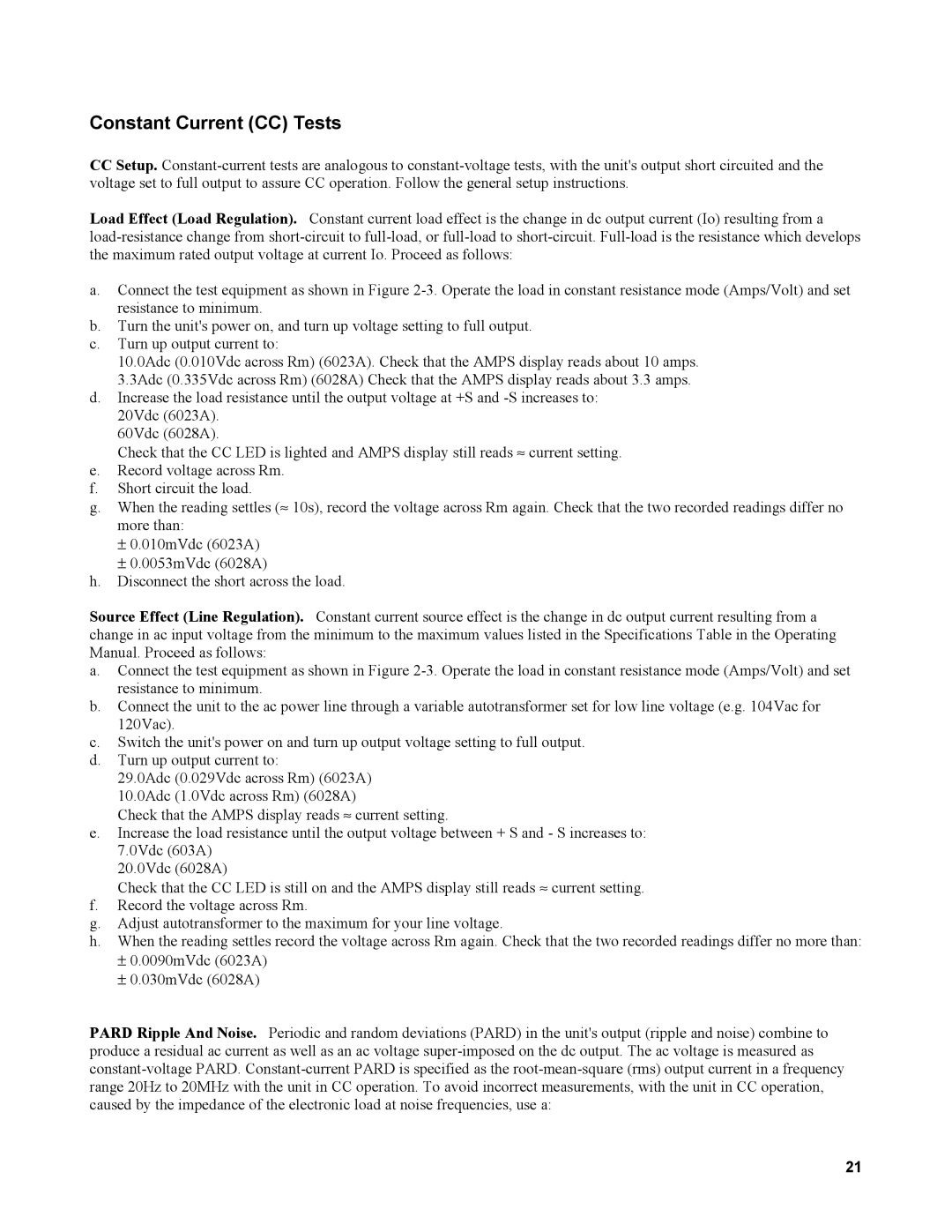Constant Current (CC) Tests
CCSetup.
Load Effect (Load Regulation). Constant current load effect is the change in dc output current (Io) resulting from a
a.Connect the test equipment as shown in Figure
b.Turn the unit's power on, and turn up voltage setting to full output.
c.Turn up output current to:
10.0Adc (0.010Vdc across Rm) (6023A). Check that the AMPS display reads about 10 amps. 3.3Adc (0.335Vdc across Rm) (6028A) Check that the AMPS display reads about 3.3 amps.
d.Increase the load resistance until the output voltage at +S and
60Vdc (6028A).
Check that the CC LED is lighted and AMPS display still reads ≈ current setting.
e.Record voltage across Rm.
f.Short circuit the load.
g.When the reading settles (≈ 10s), record the voltage across Rm again. Check that the two recorded readings differ no more than:
±0.010mVdc (6023A)
±0.0053mVdc (6028A)
h.Disconnect the short across the load.
Source Effect (Line Regulation). Constant current source effect is the change in dc output current resulting from a change in ac input voltage from the minimum to the maximum values listed in the Specifications Table in the Operating Manual. Proceed as follows:
a.Connect the test equipment as shown in Figure
b.Connect the unit to the ac power line through a variable autotransformer set for low line voltage (e.g. 104Vac for 120Vac).
c.Switch the unit's power on and turn up output voltage setting to full output.
d.Turn up output current to:
29.0Adc (0.029Vdc across Rm) (6023A) 10.0Adc (1.0Vdc across Rm) (6028A)
Check that the AMPS display reads ≈ current setting.
e.Increase the load resistance until the output voltage between + S and - S increases to: 7.0Vdc (603A)
20.0Vdc (6028A)
Check that the CC LED is still on and the AMPS display still reads ≈ current setting.
f.Record the voltage across Rm.
g.Adjust autotransformer to the maximum for your line voltage.
h.When the reading settles record the voltage across Rm again. Check that the two recorded readings differ no more than:
±0.0090mVdc (6023A)
±0.030mVdc (6028A)
PARD Ripple And Noise. Periodic and random deviations (PARD) in the unit's output (ripple and noise) combine to produce a residual ac current as well as an ac voltage
21
